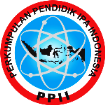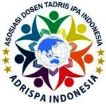Identification of Misconceptions in Chemical Bonding Materials Using Three Tier Diagnostic Test
Abstract
Chemistry learning focuses on understanding concepts, thus students who get difficulty understanding the concepts of chemistry learning will experience conceptual mistakes, especially abstract concepts such as chemical bonds. Students' difficulty understanding the material of chemical bonds can occur due to misconceptions. The misconceptions will hinder the construction and assimilation of new knowledge in students and thus students will experience difficulties in learning chemistry. To address such issue, an instrument for detecting misconceptions in chemistry is necessary to find out the misconceptions that occur among learners. The identification of such emerging misconceptions in understanding the subject matter can be analyzed using a three-tier multiple-choice diagnostic test. The present study was carried out to determine the presence or absence, and the percentage of misconceptions regarding chemical bonding material using the Three Tier Test diagnostic test. Conducted through purposive sampling technique, this research-based paper is a type of qualitative research with a descriptive approach. The research instrument uses a three-tier test objective test. The data obtained was analyzed descriptively for each student's response by using students' level of understanding list. In general, the results obtained in this line of research showed that; (1) Indicator 1, student misconceptions were 91.17% (2) Indicator 2, student misconceptions were 64.14%, (3) Indicator 3, student misconceptions were 67.64%, (4) Indicator 4, student misconceptions were 76.47%. (5) Indicator 5, students' misconceptions were 63.23%. By way of conclusion, the present project argues that there were misconceptions that occured in students of SMA Negeri 1 Class X Teluk Kuantan on the chemical bonding material, with the percentage 72.53% students experiencing misconceptions, 14, 98% students do not understand the concept, and the rest 12.48% students understand the concept of chemical bonding.
Keywords: misconception, diagnostic test, three tier test
Full Text:
PDFReferences
Arikunto. S. (2010). Dasar-Dasar Evaluasi Pendidikan. Jakarta: Bumi Aksara.
Astari. R.D. (2012). Three Tier Test Instrumen Identifikasi Miskonsepsi Atom. Ion. dan Molekul untuk SMP/Mts Kelas VIII. (Online).
Dindar. A.C. and O. Geban. (2011). Development of A Three Tier Test to Assess High School Student’s Understanding of Acids and Bases. Procedia Social and Behavioral Science. (Online).
Effendy. (2008). A-Level Chemistry for Senior High School Students Based on KTSP and Cambridge Curriculum; Volume 1B. Malang: Bayumedia Publishing.
Effendy. (2013). Ikatan Ionik dan Cacat-Cacat pada Kristal Ionik; Edisi 2. Malang: Bayumedia Publishing.
Fadlan,A. (2011). Model Pembelajaran Konflik Kognitif untuk Mengatasi Miskonsepsi pada Mahasiswa Tadris Fisika Program Kualifikasi S1 Guru Madrasah. Jurnal PHENOMENON, 2(1), November 2011
Keenan. C.W.. D.C. Kleinfelter. dan J.H. Wood. (1980). Ilmu Kimia untuk Universitas; Jilid 1. Terjemahan A.H Pudjaatmaka. 1984. Jakarta: Erlangga.
Lemma. A. (2012). Diagnosing the Diagnostics: Misconceptions of Twelfth Grade Students on Selected Chemistry Concepts in Two Preparatory Schools in Eastern Ethiopia. African Journal Online, 2(2).
Miterianifa. (2014). Pengembangan Perangkat Pembelajaran Laju Reaksi Kelas XI IPA Berorientasi Pembelajaran Inkuiri. Pekanbaru: LPPM UIN SUSKA Riau.
Marsita. R. A. Priatmoko. S. & Kusuma E. (2010). Analisis Kesulitan Belajar Kimia Siswa Kelas XI SMA Negeri 1 Pemalang dalam Memahami Materi Larutan Penyangga dengan Menggunakan Two-Tier Multiple Choise Diagnostik Instrumen. Inovasi Pendidikan Kimia, 4(1), 512-520.
Nuraeni. J. (2014). Pengembangan Tes Diagnostik Pilihan Ganda Dua Tingkat untuk Mendiagnosis Miskonsepsi Siswa pada Materi Gaya Antar Molekul. Skripsi. Bandung: Fakultas Pendidikan Matematika dan Ilmu Alam. Universitas Pendidikan Indonesia
Nurhidayati. E. dan K.H. Sugiyarto. (2011). Identifikasi Miskonsepsi Buku Teks Kimia SMA Pada Konsep Ikatan Kimia. Jurnal Pendidikan Kimia S1 Universitas Negeri Yogyakarta. Vol. 2.
Ozmen. H. (2004). Some Student Misconceptions in Chemistry: A Literature Review of Chemical Bonding. Journal of Science Education and Technology, 13(2).
Pesman. H. (2005). Development of A Three-Tier Test To Assess Ninth Grade Students’ Misconceptions About Simple Electric Circuits. Tesis. Turki: Department Of Secondary Science And Mathematics Education. Middle East Technical University.
Puspitasari. D. (2009). Remediasi Miskonsepsi Siswa Kelas X pada Bahan Kajian Struktur Atom melalui Penggunaan Software Multimedia Interaktif. Skripsi. UPI.
Rahman. Arief. Eny Enawati. Erlina. Miskonsepsi Siswa Kelas XI IPA SMA Negeri 9 Pontianak pada Materi Ikatan Kimia. Jurnal Program Studi Pendidikan Kimia FKIP UNTAN
Setiawati. G. A. D. (2011). Kajian Miskonsepsi dalam Materi Fotosintesis dan Respirasi Tumbuhan pada Mahasiswa Jurusan Pendidikan Biologi Universitas Pendidikan Ganesha Tahun Pelajaran 2010/2011.Tesis.(tidak diterbitkan). Singaraja: Universitas Pendidikan Ganesha.
Sugiyono. (2014). Metode Penelitian Pendidikan: Pendekatan Kuantitatif, Kualitatif, dan R&D. Bandung: Penerbit Alfabeta.
Suparno. (2005). Miskonsepsi & Perubahan Konsep Pendidikan Fisika. Jakarta: Grasindo.
Suparno. P. (2013). Miskonsepsi dan Perubahan Konsep dalam Pendidikan Fisika. Jakarta: Gramedia.
Suyanti. R.D. (2010). Strategi Pembelajaran Kimia. Yogyakarta: Graha Ilmu
Tan. K.C.D. N.K. Goh. L.S. Chia. dan H.K. Boo. (2001). Alternative Conceptions of Chemical Bonding. Journal of Science and Mathematics Education in S.E. Asia, 24(2).
Tan. K.C.D. and D.F. Treagust. (1999). Evaluating Student’s Understanding of Chemical Bonding. Journal School Science Review. (Online).
Taufiq, M. 2012. Remediasi Miskonsepsi Calon Guru Fisika pada Konsep Gaya melalui Penerapan Model Siklus Belajar (Learning Cycle) 5E. JPII, 1(2), 198-203.
Uzuntiryaki. E. (2003). Effectiveness of Constructivist Approach on Students’ Understanding of Chemical Bonding Concepts. Tesis. Turki: Department Of Secondary Science And Mathematics Education. Middle East Technical University.
DOI: http://dx.doi.org/10.24014/jnsi.v5i1.16860
Refbacks
- There are currently no refbacks.

Journal of Natural Science and Integration
E-ISSN: 2620-5092 | P-ISSN: 2620-4967
Published By:
Department of Natural Sciences Educations, Faculty of Education and Teacher Training, State Islamic University of Sultan Syarif Kasim Riau, Indonesia
Mailing Address:
Jl. H.R Soebrantas Km. 15 No. 155 Kelurahan Simpang Baru Kecamatan Tuah Madani, Pekanbaru, Riau, Indonesia
email: jnsi.tadrisipa@uin-suska.ac.id
Indexed By:
Journal of Natural Science and Integration is licensed under a Creative Commons Attribution 4.0 International License.


_-_Copyy2.png)






.jpg)
.png)
.jpg)
.jpg)




